Planting Wildflowers For The Environment
Native or Indigenous Species
A native plant is one that naturally occurs in a region without being introduced or genetically modified by humans. So the plant evolved in situ, spread there naturally or was carried there by wind, water, birds, animals or other life.
Benefits of Native Species
Native plants will be suited to the environment and soils found in their native homes and are much more likely to be able to live in harmony with other naturally occurring plants. They won’t need you to add composts or change the soil ph to thrive and are less likely to need irrigation. They won’t out-compete other naturally occurring species meaning you are more likely to get a good mix of different species. All these factors mean these plants are less demanding on our energy and water resources.
Native animal life is more likely to have evolved to live with or off these species too. So planting native species better supports your local ecosystem particularly our busy insect friends who are vital for soil health and the pollination of wild, domestic and commercial plants.
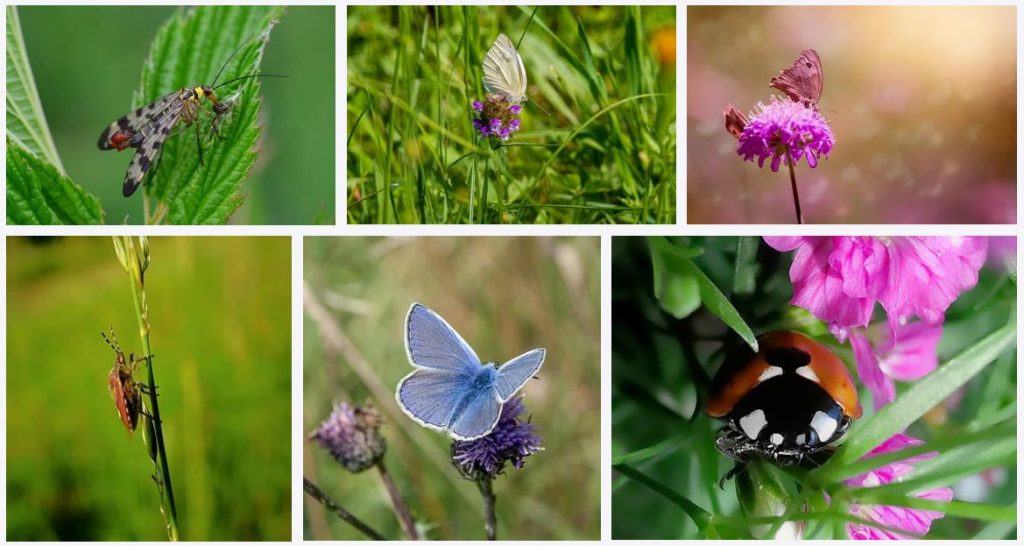
Mix It Up
This healthy mix of lots of different species that have evolved to co-exist is the healthiest for our environment. Plants each have their own role to play in a complex codependent ecosystem. Plants stabilise topsoil preventing erosion and keeping waterways clean. Some plants add nitrogen to the soil which others rely upon. Some provide food for bees, others for birds, others homes for field mice. This complex mix of life keeps each component in balance preventing one plant or animal running amok and taking over. This means fewer pests and disease and no need for pesticides or other chemical treatments.
Native or Foreign Species
Non-native species are ones that would not have occurred in that region or location naturally so this implies they have been introduced or genetically modified by humans. All genetically modified plants are considered non-native.
Most of the plants in our gardens and vegetable patches are also non-native as they have been brought from another country. Corn, Peanuts, Papayas, Vanilla, Salvias, Dahlias, Fuchsias and Chilies are from Central & South America. Aubergines, Roses, Apples, Peaches, Barley, Oranges, Magnolias, Hydrangeas, Peonies, Camellias, Chrysanthemums and Ginger from Asia. The Middle East gave us Oats, Sesame, Peas, Leeks, Honeysuckle, Jasmine, Coriander, Cucumbers, Mustard and Almonds. Europe gave us Turnips, Pears, Poppies, Foxglove, Cornflowers, Blackcurrants, Narcissus, Thyme, Cabbage, Delphinium and Chestnuts!
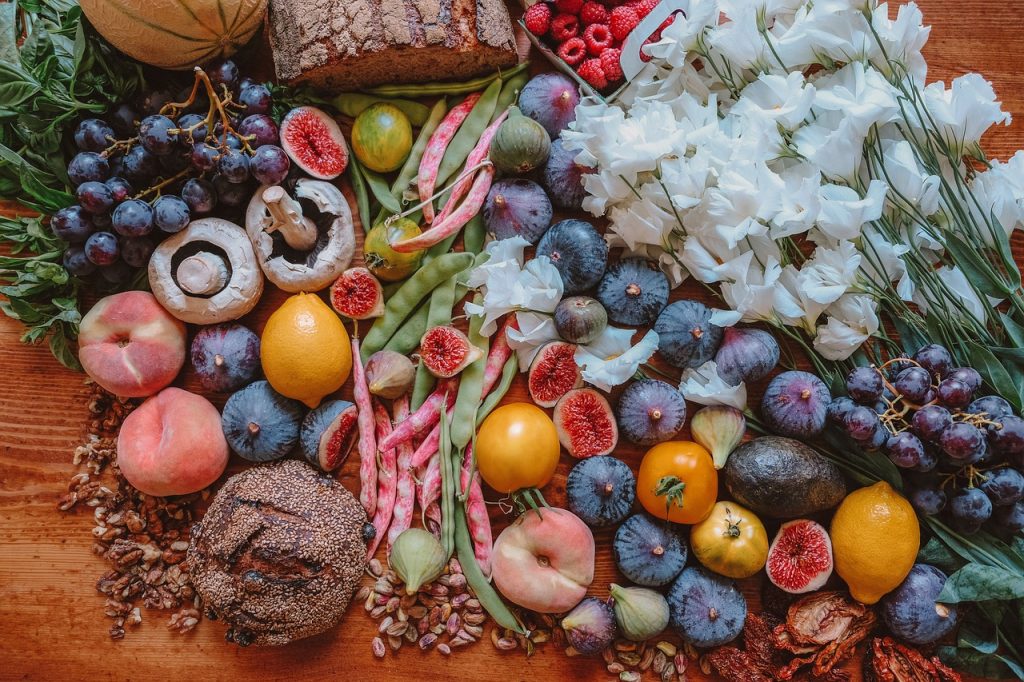
Selective Breeding
There is an added complication with domesticated crops. Take sweetcorn or maize for example. Based on archaeological and DNA evidence, sweetcorn was domesticated in Mexico sometime between 10,000 and 6,000 years ago from about 50 naturally occurring varieties of a plant called landraces. In the image below the top seedhead shows what one of these would have looked like. Humans mixed these 50 varieties together and selected the plants with the most favourable traits which they continued to selectively breed to increase the yield of seeds, see the middle seedhead below. Eventually, we ended up with the huge sweetcorn that we know today, see the bottom seed head. Can this modern variety of corn be considered to be a native species or does the human intervention of this type make it non-native?
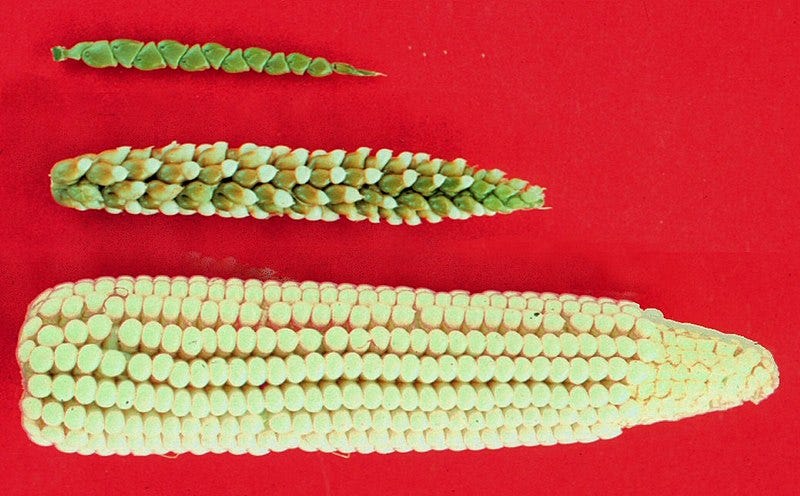
Although there has not been any direct genetic manipulation in lab, selective breeding has resulted in a change to the genetic makeup of these plants by trial and error. Can this be considered to be a natural process? After all, humans are a natural part of the world’s ecosystem. Other animals like birds have caused some species of plant to thrive by spreading their seeds. When do we consider such interventions to be non-natural? There isn’t a simple answer to this question.
Most plants and vegetables you buy from a seed catalogue or from a garden centre will have been aggressively selectively bred to increase the size and length of flowering, boost disease resistance or increase the volume of fruit and seed production. Many people would not consider these selectively breed varieties to be native. However, all of these commercial varieties will have had a wild version and in many cases, you will be able to buy these wild varieties from specialist plant suppliers.
Non-Native Invasion
There are some examples of non-native plants that have caused devastation when they have been introduced into a new ecosystem. Japanese Knotweed (Fallopia japonica) is a classic example. The plant grows incredibly fast and can undermine the foundations of buildings. It requires specialist contractors to remove the plant, roots, surrounding soil and chemically treat the affected area.
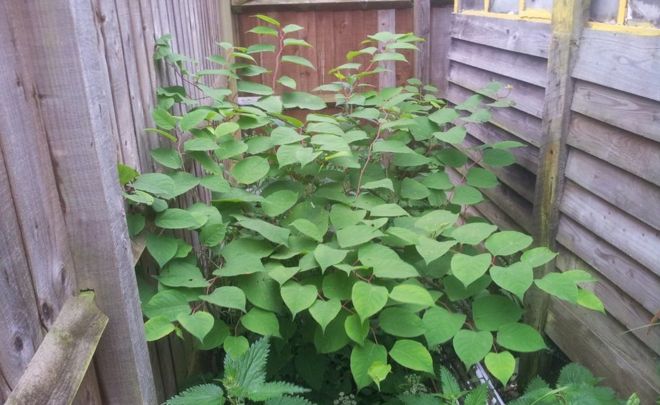
It is native to Japan, China and Korea where it does not cause a problem because it is kept in check by; other similarly vigorous plants like Bamboo, insects, soil fungi and plant diseases. When the plant was introduced into the USA and Europe none of these other controlling species were there to keep the plant in check, hence the rapid invasion.
Non-Native Greed
Most non-native species do not cause this level of destruction. This is often because they have not evolved to grow in our gardens. To get them to thrive we have to add lots of rich compost, heat seedlings in greenhouses, add lots of fertilisers, use insecticides and irrigate heavily. Without these interventions, the plants will not grow or spread. So there is no threat of them taking over our wild spaces – great? Er, no.
There is still a huge negative environmental impact to growing them. Think of all those peat ecosystems stripped for compost and all that fossil fuel burnt to transport it. The production of plant food and insecticides has an environmental cost and these soluble compounds find their way into our waterways where they cause pollution. We all have better things to do with water than unnecessarily irrigate plants.
6 Rules For Better Plant Choices
If we make better choices for plants that are suited to our soils and weather then we can cut out all of this excess!
- When buying new plants, bulbs or seeds: Consider their suitability to your garden – it’s soil, weather and the amount of sunlight you receive. If you chose a plant that is not suited it will be resource-intensive to grow and less likely to support local wildlife. It is also unlikely to produce the results you want so choose a variety that you might not love quite as much but that will thrive in your garden.
- Identify resource-hungry plants in your garden: Have you got a rose that is just not flowering no matter how much fertiliser you add? Is there a shrub or vegetable that still struggles even though you spend all summer irrigating it? Take a hint – the plant does not like your garden! Get rid of it and replace it with one that is better suited to your conditions. It will grow, flower and fruit better and it will need less water and food.
- Learn a bit about local native species and find a few that you like to add to your garden. Many will self-seed and naturally find their way to the areas of your garden that suits them best. You will soon find sparse dark corners and patchy beds fill up with flowers, grasses and bulbs.
- Buy a Mix. You can easily buy a wide range of native wildflower and grass species suited to your garden. Just find a specialist supplier and buy one of their wildflower seed mixes. You can choose a generic bee or bird-friendly mix or one more specifically targeted to your soil type or region.
- Share plants locally. Find a local gardening club or seed exchange. You can learn which plants are native and/or grow well in your area and get access to free seeds, bulbs and cuttings.
- Don’t strip wild habitats. Never ever take wildflowers, plants, seeds or dig up bulbs. It doesn’t take many people doing this to devastate a habitat. Get your plants, seeds and flower bulbs from know provenance sources like other gardeners and certified suppliers.
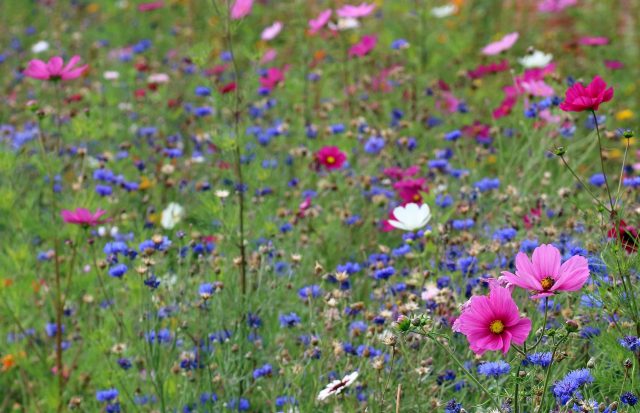
No comments:
Post a Comment